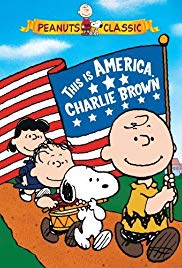George Washington (1732 – 1799) was very much aware that his actions set standards for the presidents after him. Perhaps his most important example was involuntarily giving up power by retiring after two terms. In the 18th century, it was unheard of for powerful politicians to willingly step down from their high offices. The two-term tradition would last for more than 140 years. Not until 1940, when the country was facing the profound challenge of the Second World War, did a president run for a third term. Presidents are now limited to two terms by Constitutional amendment.
Washington was a national leader longer than any other man. He was appointed Commander in Chief of the Continental Army in 1775 and served until 1783. He served as President of the Constitutional Convention in 1787 and then as President from 1789 – 1797.
Abraham Lincoln (1865) saw the country through the Civil War. Lincoln understood that the cause of democracy worldwide would be set back hundreds of years if the United States was not able to hold itself together. Most citizens in the North agreed with him. It was for this reason that Lincoln and the North were willing to fight the bloodiest war in U.S. history, a war in which more than ten thousand young men could be killed in a day. In his Second Inaugural Address, Lincoln described the war as divine punishment to the nation for the sin of slavery. It was Lincoln who shepherded the U.S. through the punishment and brought it out in one piece, united as one country.
The Gettysburg address was given by President Lincoln on November 19, 1863, at the dedication of the Gettysburg National Cemetery. It is a key document of U.S. history. It succinctly sets out the Union position in the Civil War.
Four score and seven years ago our fathers brought forth on this continent, a new nation, conceived in liberty and dedicated to the proposition that all men are created equal.
Now we are engaged in a great Civil War, testing whether that nation or any nation so conceived and so dedicated, can long endure. We are met on a great battlefield of that war. We have come to dedicate a portion of that field as a final resting place for those who have given their lives that that nation might live. It is altogether fitting and proper that we should do this.
But in a larger sense, we can not dedicate we can not consecrate — we can not hallow this ground. The brave men, living and dead, who struggled here have consecrated it far above our poor power to add or detract. The world will little note, nor long remember what we say here, but it can never forget what they did here. It is for us the living, rather to be dedicated here to the unfinished work which they who fought here have thus far so nobly advanced. It is rather for us to be here dedicated to the great task remaining before us that from these honored dead we take increased devotion to that cause for which they gave the last full measure of devotion that we here highly resolve that these dead shall not have died in vain that this nation, under God, shall have a new birth of freedom and that government of the people, by the people, for the people, shall not perish from the earth.
Franklin Delano Roosevelt (1882 – 1945), 32nd President of the United States, was the only President to be elected for more than two terms. In fact, he was elected to four terms, although he died in the first year of the fourth term. In 1921, Roosevelt’s legs were paralyzed by poliomyelitis. He never let this condition hamper him. Roosevelt led the United States through two of the greatest challenges to its existence: the Great Depression and the Second World War. Each of these crises could easily have destroyed the country. He fought the Great Depression by giving people hope, starting government programs to ameliorate the suffering caused by widespread unemployment, and reforming many institutions such as the banking system and the stock market. Under Roosevelt, the government established social security to provide for people in their old age. His statement in his first inaugural that, “the only thing we have to fear is fear itself” is a classic of political oratory, ranking with Lincoln’s Gettysburg Address. In the Second World War, Roosevelt engineered the defeat of Nazi Germany, Fascist Italy, and Imperial Japan. When Roosevelt died in 1945, most citizens of the U.S. felt as if a member of their family had passed away.


